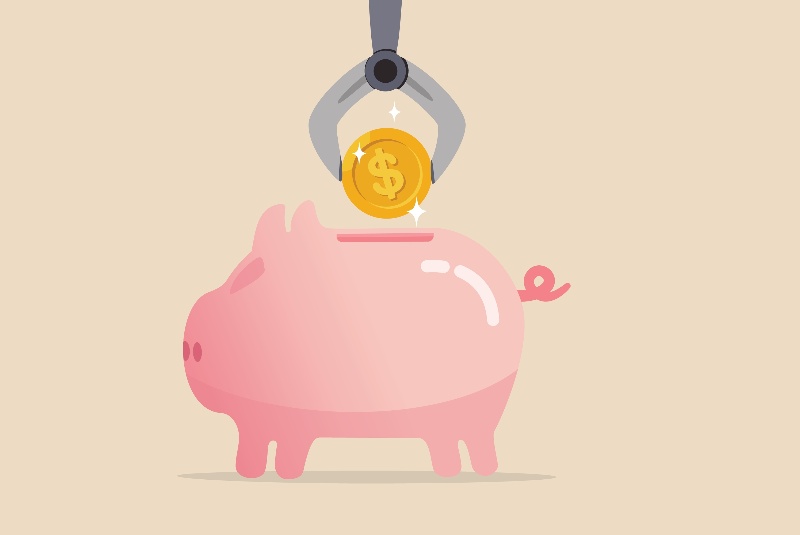In today’s fast-paced digital age, time is a precious resource that everyone seems to be running out of. Between work, family, and social obligations, financial planning can sometimes fall by the wayside. However, saving money consistently is crucial for long-term financial stability and achieving life goals, from buying a home to securing retirement. This is where automating savings can make a significant difference—by ensuring that your financial future is secure, without requiring constant attention or time.
Why Automate Savings?
Automating savings offers a range of benefits that help build financial discipline with minimal effort:
- Consistency Without Effort: Automating savings turns a conscious, often delayed, decision into an effortless habit. When you automate, saving becomes a consistent part of your routine without needing your active involvement. This consistency is the backbone of effective financial planning.
- Avoiding the 'Forgot to Save' Phenomenon: Life gets busy, and it’s easy to lose track of smaller, repetitive tasks—saving often being one of them. Automating removes the need to remember, ensuring that savings happen reliably, whether or not you remember to set aside money each month.
- Compounding Gains Over Time: The sooner you save, the sooner your money can start working for you through interest or investment returns. With automated savings, your contributions grow over time and benefit from compounding, where returns are earned not just on the original amount saved, but also on the returns generated.
Methods for Automating Savings
With the growth of financial technology, there are now multiple ways to automate savings, making it easier than ever to manage your finances effectively. Here are some of the most popular methods to consider:
- Direct Deposits to a Separate Account: Many employers allow employees to direct a portion of their paycheck to a savings or investment account. By setting up an automatic allocation, a predetermined amount is deposited into a savings account each payday, ensuring that savings happen before you even access the funds.
- Round-Up Savings Programs: Some banks and financial apps offer a feature that rounds up your debit card transactions to the nearest dollar, with the difference deposited into a savings account. For example, if you spend $3.70 on a coffee, $0.30 will be transferred to savings. While each transaction may contribute only a small amount, the total can add up significantly over time, especially if you make frequent purchases.
- Recurring Bank Transfers: Set up scheduled transfers from your checking to your savings account on a weekly, bi-weekly, or monthly basis. This flexible option allows you to adjust the amount and frequency of transfers to fit your changing financial circumstances and goals.
- Automated Investment Contributions with Robo-Advisors: Robo-advisors provide an easy way to automate investments. These digital platforms create a diversified investment portfolio tailored to your goals and automatically reinvest earnings. By automating contributions, you ensure that your investments grow steadily without manual intervention.

Important Considerations Before Automating Savings
While automated savings offer considerable benefits, it’s essential to approach them thoughtfully to align with your financial situation:
- Assess Your Financial Health: Before determining the amount to save automatically, review your monthly income, expenses, and any outstanding debts. This process helps ensure that the amount saved is realistic and does not disrupt your ability to manage day-to-day expenses or debt repayments.
- Maintain an Accessible Emergency Fund: While it’s important to save and invest for long-term goals, don’t overlook the need for an emergency fund. Aim to have at least three to six months’ worth of expenses in a liquid savings account. Automation should not leave you without funds for unexpected needs.
- Monitor and Adjust Regularly: Automating savings can make it easy to overlook your financial progress. Regularly review your automated contributions and adjust them as needed. For example, if you receive a raise, increase your savings allocation to reflect your new income level. Conversely, if financial priorities change, reduce your automated savings temporarily to accommodate new expenses.
- Diversify Your Automated Investments: If you’re automating contributions to an investment account, ensure that your portfolio is diversified across different asset classes, such as stocks, bonds, and cash equivalents. Diversification helps manage risks and can stabilize your returns over time.
Maximizing the Benefits of Automated Savings
To make the most of automated savings, consider these strategies to enhance the effectiveness of your efforts:
- Begin as Early as Possible: The earlier you start saving, the more time your money has to grow through compounding. Even if you start with a small amount, consistent contributions can lead to significant savings over time.
- Seek Out High-Interest Savings Accounts: Many banks offer high-yield savings accounts with interest rates that are significantly higher than standard accounts. Research and switch to a high-interest account if possible, as the extra interest will amplify your savings over time.
- Adjust Savings After Bonuses or Raises: When you receive additional income, such as a bonus or a raise, consider increasing your automated savings. Incrementally raising your savings rate helps ensure that your financial progress keeps pace with your earnings.
- Combine Manual and Automated Savings: Automation doesn’t mean you shouldn’t set aside extra money when possible. When you receive windfalls—like tax refunds, birthday gifts, or other unexpected income—consider manually transferring part or all of it to your savings or investment accounts.
How to Choose the Right Platform for Automated Savings
With so many financial platforms available, selecting the right one is critical. When evaluating options, consider the following factors to ensure the platform aligns with your goals and preferences:
- Ease of Use and Accessibility: Choose a platform that is easy to use and accessible on multiple devices. Many people prefer mobile apps, so ensure that the platform has a well-designed app if mobile accessibility is important to you.
- Security and Insurance: Financial security should be a top priority when choosing a savings platform. Ensure the platform has robust security measures in place, such as encryption, two-factor authentication, and FDIC insurance for any cash held in your account.
- Low or No Fees: Fees can reduce the returns on your savings over time. Look for platforms with minimal fees, especially if you are contributing a smaller amount each month. Many banks and fintech platforms offer fee-free accounts with competitive interest rates.
- Flexibility in Saving and Investing Options: Select a platform that offers flexibility in terms of both saving and investing. Some platforms allow you to switch between cash savings and investments or to adjust the allocation of funds within an investment portfolio.
The Long-Term Benefits of Automated Savings
The most significant advantage of automated savings is the ability to build a nest egg effortlessly, setting you up for a secure financial future. Over time, the funds you accumulate can serve various purposes, from buying a home to funding retirement or building a college fund for your children. By making small, consistent contributions, you harness the power of compounding and growth without the constant need for active management.
In today’s busy world, automating your savings provides peace of mind, knowing that your finances are growing steadily and in line with your goals. By setting up the right automated tools, regularly monitoring them, and occasionally supplementing your savings manually, you can enjoy financial stability and flexibility that benefit both your present and future. Embrace automation and make your money work for you, freeing up time to focus on other areas of life while ensuring you’re consistently building toward a more secure financial future.




